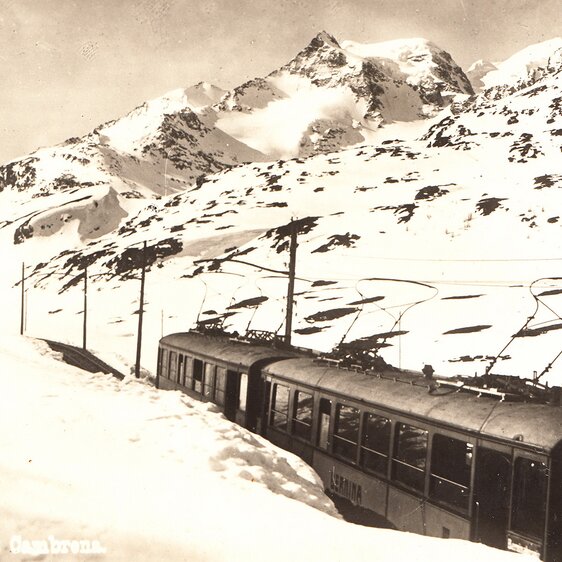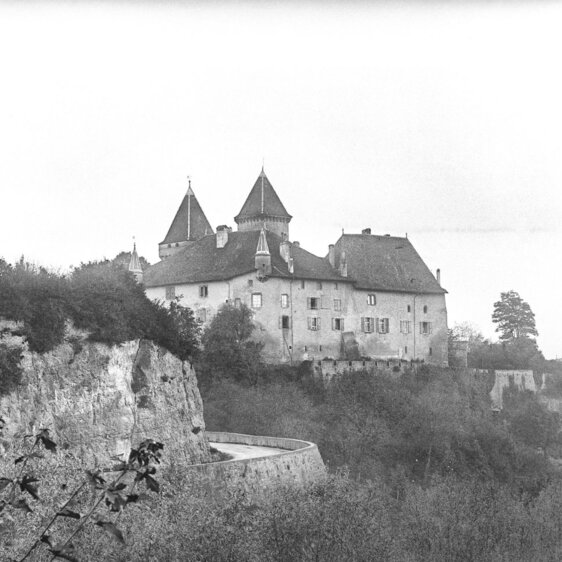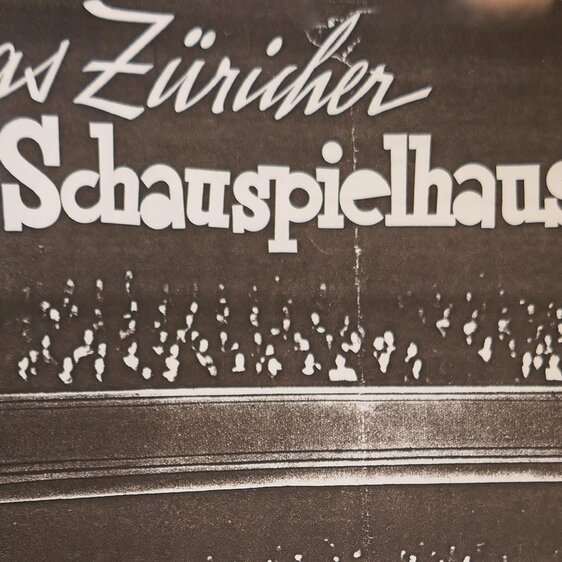National Museum Zurich
| 12.1.2024 - 21.4.2024
Praesens-Film AG is celebrating its 100th anniversary in 2024. Switzerland’s oldest surviving film company has an eventful past that has taken it all the way to Hollywood. The exhibition at the National Museum Zurich shows the extent to which the silver screen has always reflected the zeitgeist.
The company Praesens-Film, which was founded in 1924 by Jewish immigrant Lazar Wechsler and Swiss aviation pioneer Walter Mittelholzer, specialised from the outset in advertising films, a format which was little known in Switzerland at the time. Its clients included brands such as Lux, Grieder and Bally. It soon expanded into commissioned films, which in the 1930s addressed controversial topics such as alcoholism and abortion.
Before the outbreak of the Second World War, Lazar Wechsler and his team devoted themselves to the defence of the common spiritual values of Switzerland. This was the age of Praesens-Film’s most successful motion pictures, such as Gilberte de Courgenay, which paints a romanticised picture of military life for the Swiss soldiers stationed at the border during the First World War. In the film, comedic interludes involving a horse bring a light-hearted touch and raise morale while the eponymous Gilberte provides comfort and solace to the lonely and homesick soldiers. The film made its lead actress Anne-Marie Blanc Switzerland’s first female film star.
When it started to become apparent in 1943 that the Allies would win the war, Praesens-Film turned to Humanism. Marie-Louise tells the story of a French girl who, thanks to the children’s aid programme run by the Swiss Red Cross, is taken in by a Swiss family for three months during the Second World War. The film picked up on Switzerland’s humanitarian tradition and reinforced the audiences’ sense of national identity. Marie-Louise was not only a hit in Switzerland, but also internationally. In 1946, the film was the first non-English language production to win the Oscar for Best Original Screenplay.
In the post-war period, audiences appreciated light-hearted films without any political undertones. Two Heidi films that were released in quick succession offered the perfect chance for escapism into an idyllic mountain world. Heidi was a global success and became a wholesome advert for Switzerland’s tourism and policies. The sequel Heidi and Peter was the first Swiss colour film. Like its predecessor, it presents the mountains as a healthy travel destination, contrasting them with menacing urban settings.
By the late 1950s, Swiss commercial cinema could barely cover its growing production costs any longer. In addition, Praesens-Film started to experience one financial flop after another. In 1972, after the death of his wife Amalie, the despondent Lazar Wechsler had some of the company’s archives destroyed. The company was subsequently taken over by brothers Martin and Peter Hellstern, who then ran it merely as a film distributor. Since 2009, Praesens-Film has shifted its focus back to co-productions.
The exhibition at the National Museum Zurich shines a spotlight on the people who wrote Swiss film history, in front of and behind the camera. Covering the entire film production process, from screenplay and directing, to acting, camera work, editing and music, it not only recounts a piece of Swiss cultural history through objects and anecdotes, but also provides an exemplary insight into topics that shaped the 20th century socially, politically and economically.
The exhibition is being held in partnership with Cinémathèque suisse.






